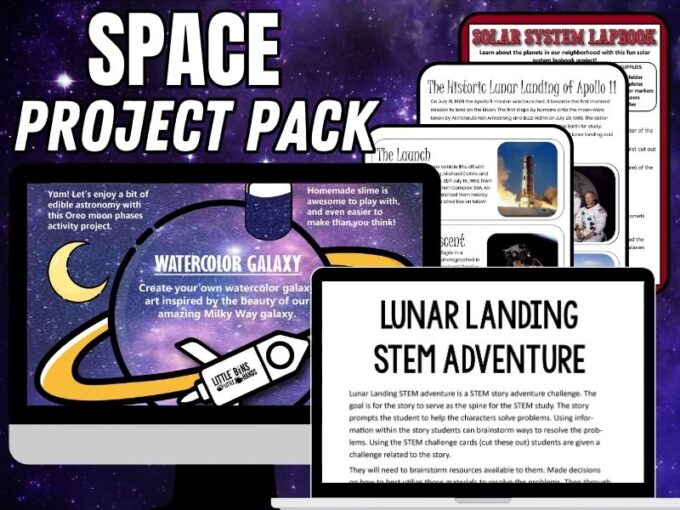Planetariums are great places to see the night sky without a powerful telescope. Create your own DIY planetarium or star projector from a few simple supplies. You can use to explore constellations that are found in the Milky Way galaxy, and learn about scientist, Neil deGrasse Tyson. We love fun and easy space activities for kids!
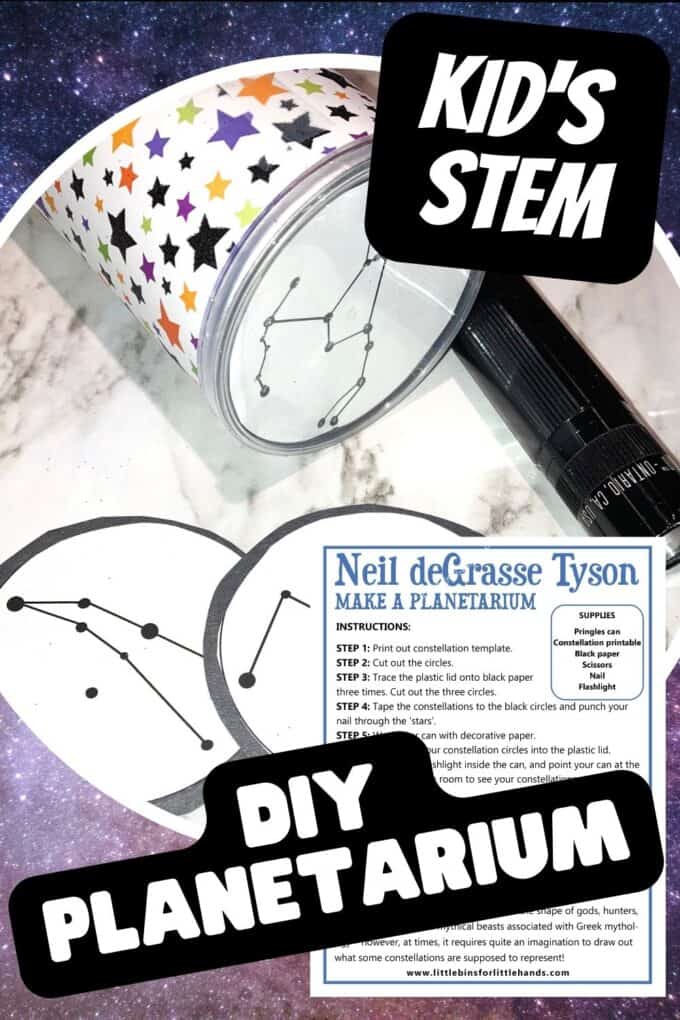
Neil deGrasse Tyson’s Planetarium
Famous scientist Neil deGrasse Tyson is an American astrophysicist, planetary scientist, author, and science communicator. He has been the director of the world-famous Hayden Planetarium since 1996.
Tyson first became interested in space when, at age 9, he visited the Hayden Planetarium of the American Museum of Natural History for the first time.
He is well known for his demotion of Pluto to a dwarf planet. Tyson said not deleting Pluto as a “planet” would insult all the other planets in the solar system. The decision to reclassify Pluto was not meant to diminish its significance but rather to clarify the definition of what makes a planet in our solar system. Check out more fun facts about our solar system here.
You may not be able to travel to the Hayden Planetarium, but you can explore the constellations with your own homemade star projector.
Watch the Video!
How To Make A DIY Star Projector
Supplies:
- Pringles can
- Constellation printable
- Black paper
- Scissors
- Nail
- Flashlight
Instructions:
STEP 1: Print out the constellation template above.
STEP 2: Cut out the circles.
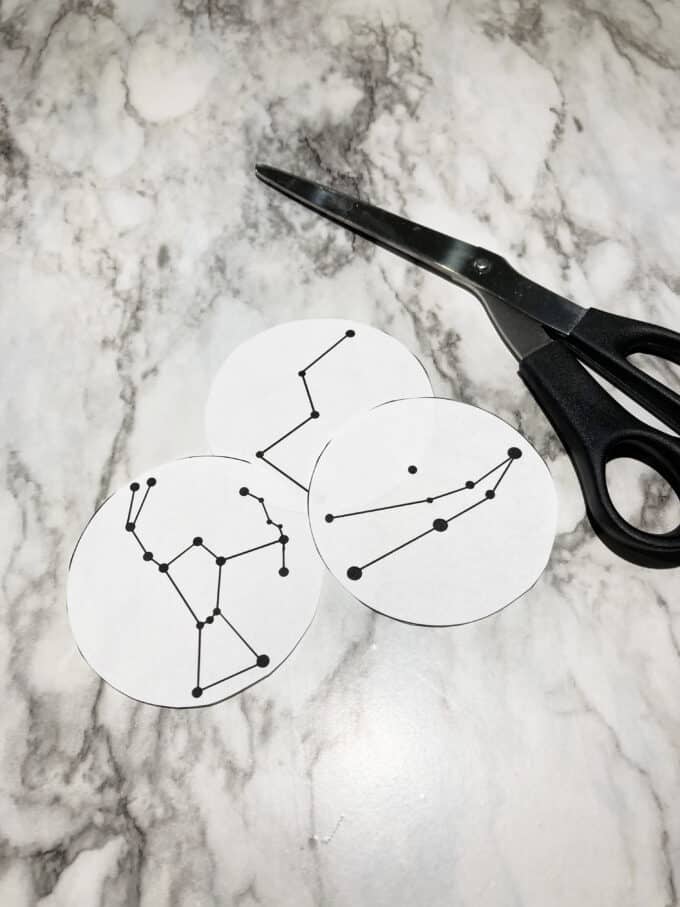
STEP 3: Trace the plastic lid onto black paper three times. Cut out the three circles.
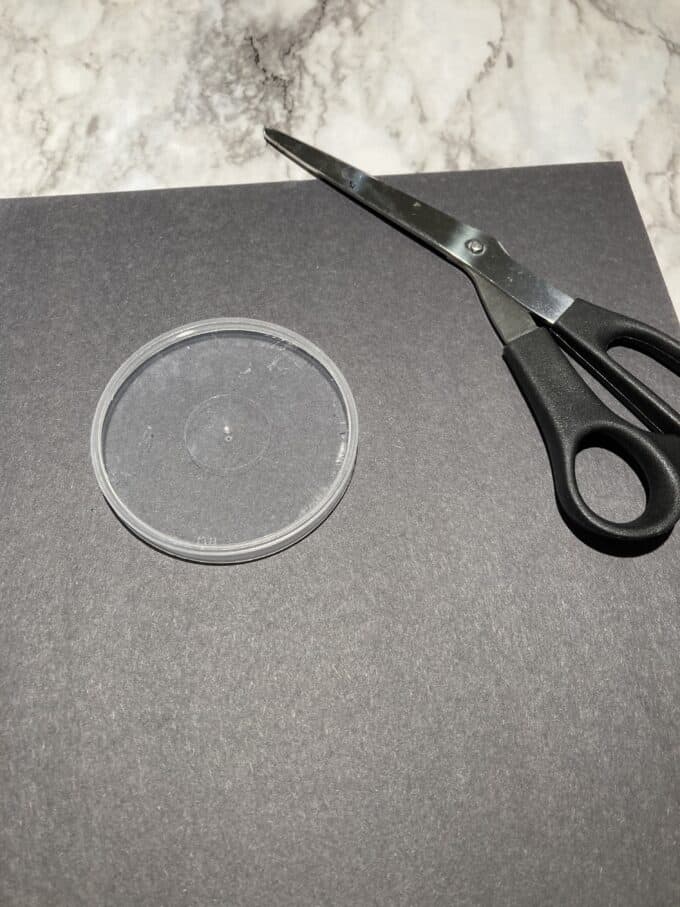
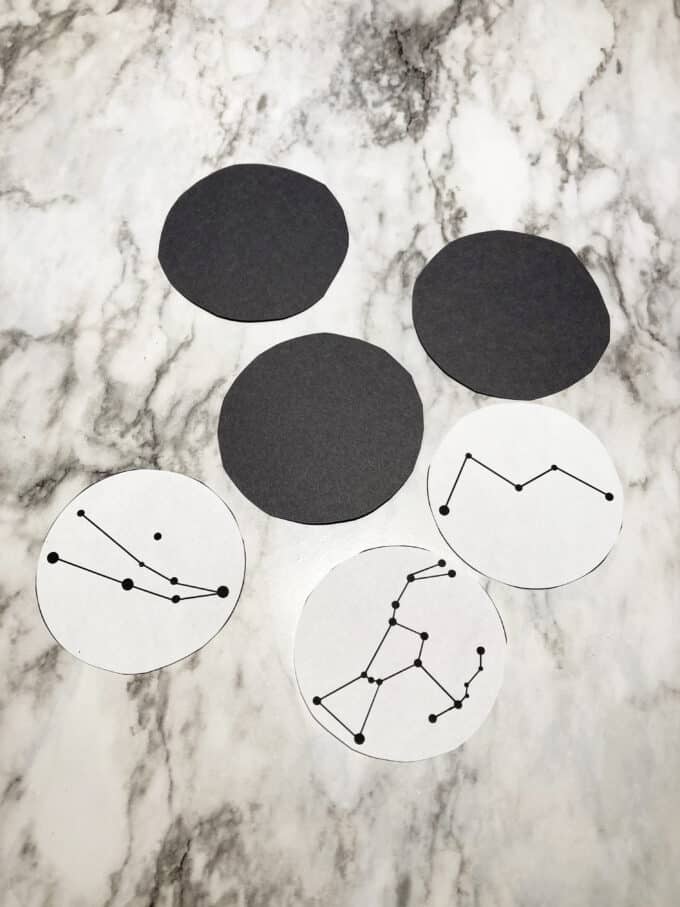
STEP 4: Tape the constellations to the black circles and punch your nail through the ‘stars’.
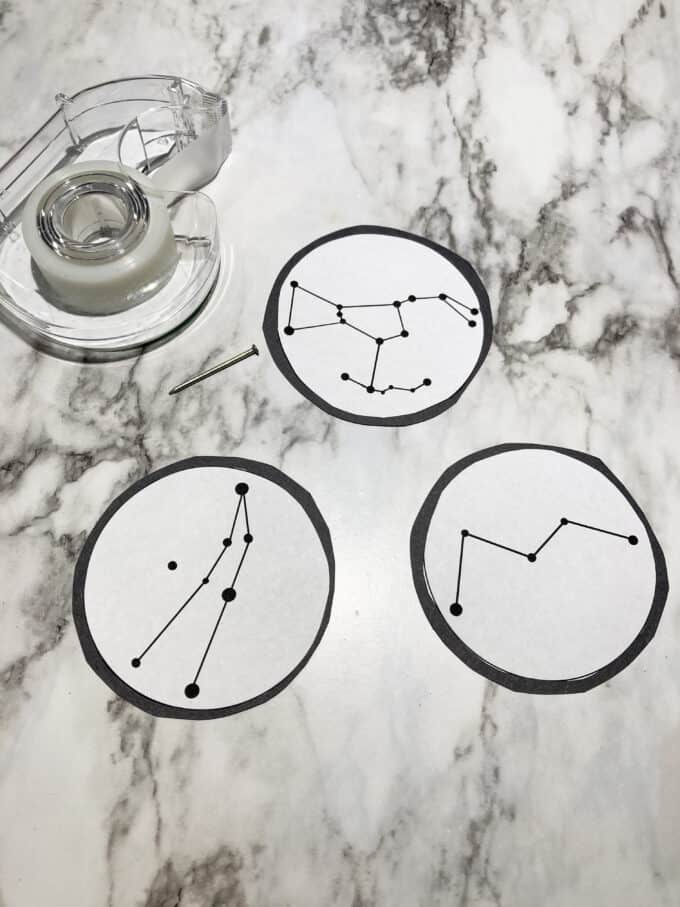
STEP 5: Wrap the can with decorative paper.
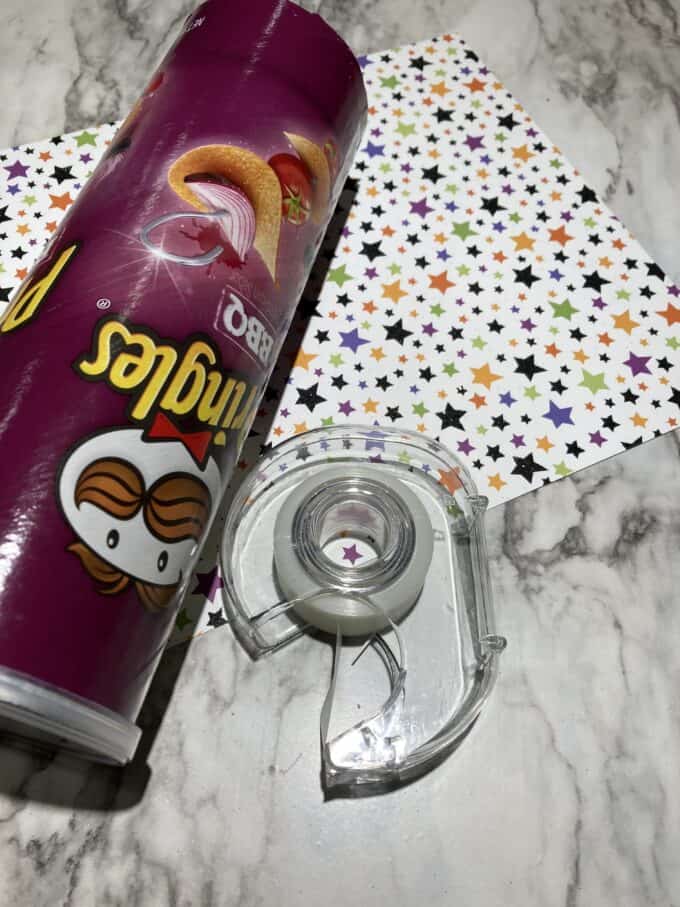
STEP 6: Put one of your constellation circles into the plastic lid.
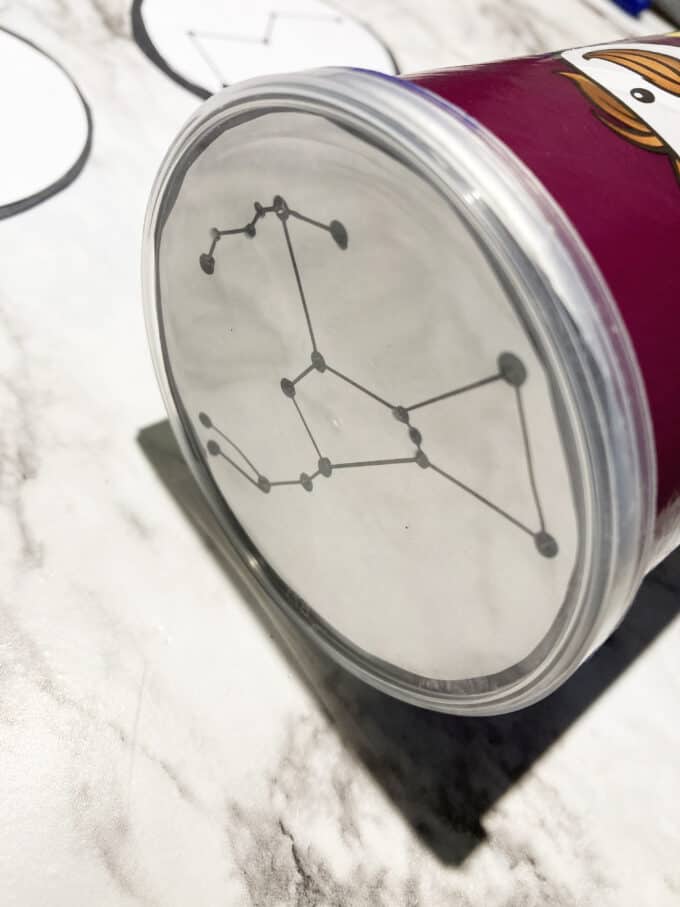
STEP 7: Shine your flashlight inside the can, and point your can at the ceiling or wall in a dark room to see your constellations come to life!
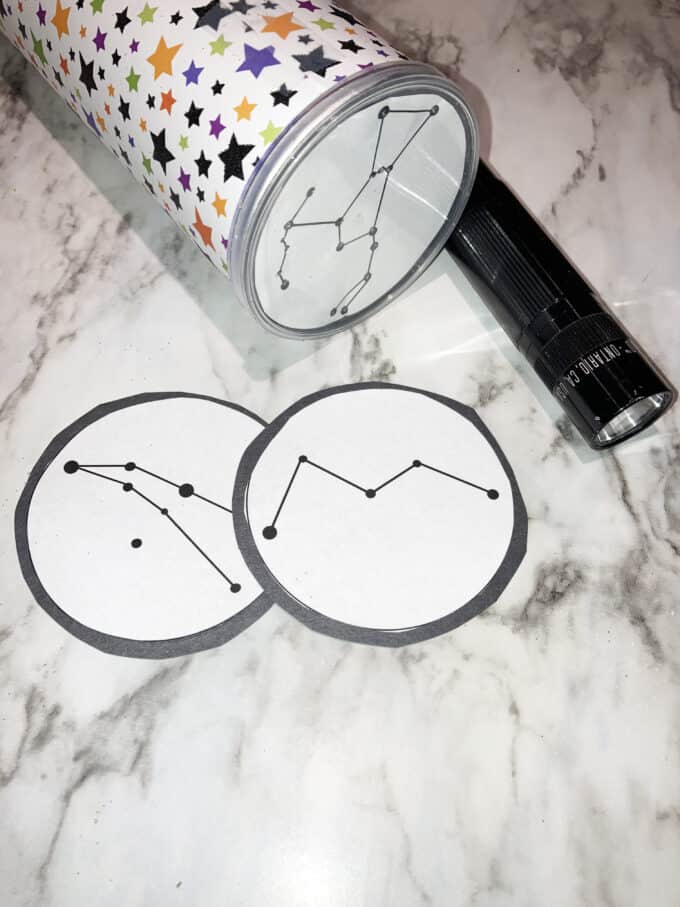
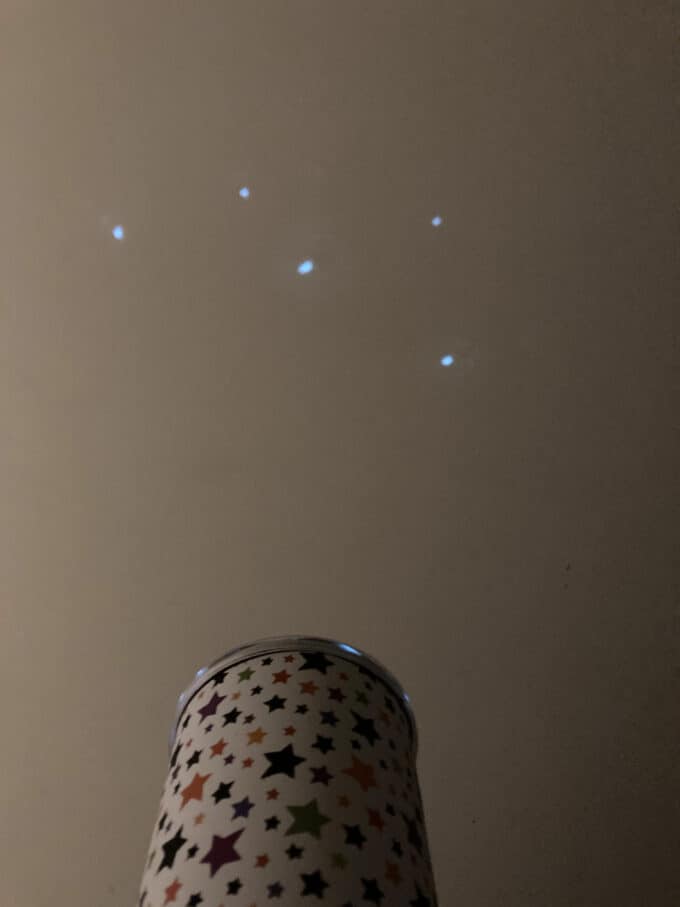
What Are Constellations?
A constellation is simply a group of stars that forms a recognizable pattern. Constellations are named from what they form or sometimes they are given the name of a mythological figure. They are similar to landmarks in the night sky and are useful for assisting astronomers and navigators to locate certain stars.
Constellations You May See In The Night Sky
Orion The Hunter
In mythology, Orion was known as one of the most handsome men. His constellation can be found facing a bull or chasing the Pleiades sisters in the sky. He is shown with his large club. Orion’s belt is a string of very bright stars that is very easy to find and well known.
Cassiopeia
Cassiopeia is a large constellation in the northern sky named after the vain queen Cassiopeia, mother of Andromeda, in Greek mythology, who boasted about her unrivaled beauty. It can be identified by its distinctive W shape, formed by five bright stars in the constellation.
Andromeda
This constellation is named after Andromeda, daughter of Cassiopeia, in the Greek myth, who was chained to a rock to be eaten by the sea monster Cetus. Its most notable feature is the great Andromeda Galaxy, one of the nearest galaxies to Earth and one of the few galaxies you can see with the naked eye.
More Fun Space Activities
Explore fun and easy space activities for kids!
- Try this easy to print and set up constellation activities.
- Build a space shuttle, a satellite or even the Aquarius Reef Base.
- Enjoy a bit of edible astronomy with Oreo phases of the moon.
- Make a solar system diorama.
- Build a simple spectroscope like astronomers use to study stars.
- Explore our solar system with this printable solar system lapbook project.
- View an eclipse safely with a DIY pinhole camera.


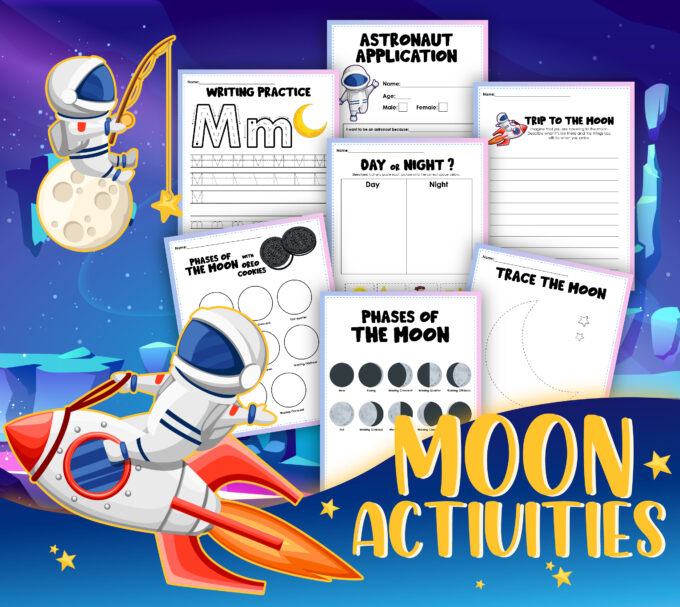
Printable Space Projects Pack
With 250+ pages of hands-on fun space themed fun, you can easily explore classic space themes with your kiddos including moon phases, constellations, the solar system, and of course the 1969 Apollo 11 lunar landing with Neil Armstrong.
⭐️ Activities include supply lists, instructions, and step-by-step pictures. Also Includes FULL Space Camp Week. ⭐️
Celebrate the 1969 lunar landing with easy-to-do activities at home, with groups, at camp, or in the classroom. Read up on this famous event and learn more about Neil Armstrong as well.
- Moon STEAM activities combine science, technology, engineering, art, and math with supply lists, set up and process photos, and science information. Craters, fizzy moon rocks, edible moon phases, watercolor galaxies, a DIY planetarium, bottle rocket, and so MUCH MORE!
- Printable Moon STEM challenges that are simple but engaging for home or classroom. Also included, is a Moon theme STEM Story with challenges perfect for going on a STEM adventure inside or outside!
- Moon phases & Constellation activities include charting moon phases, oreo moon phases, moon phases mini book, and more!
- Solar System activities include a solar system lapbook template and plenty of information to learn about the solar system and beyond!
- Moon extras include I-Spy, algorithm game, binary code project, 3D rocket building, thaumatropes, and MORE!


